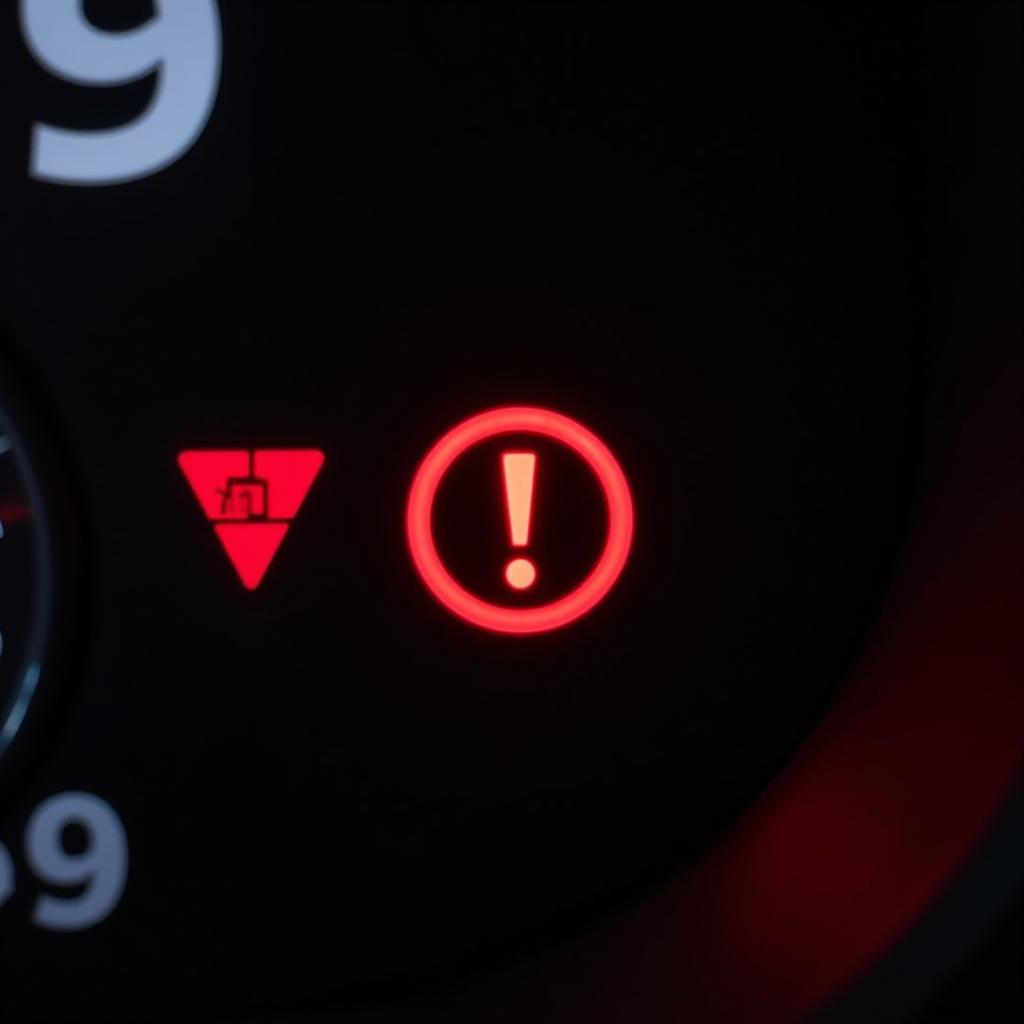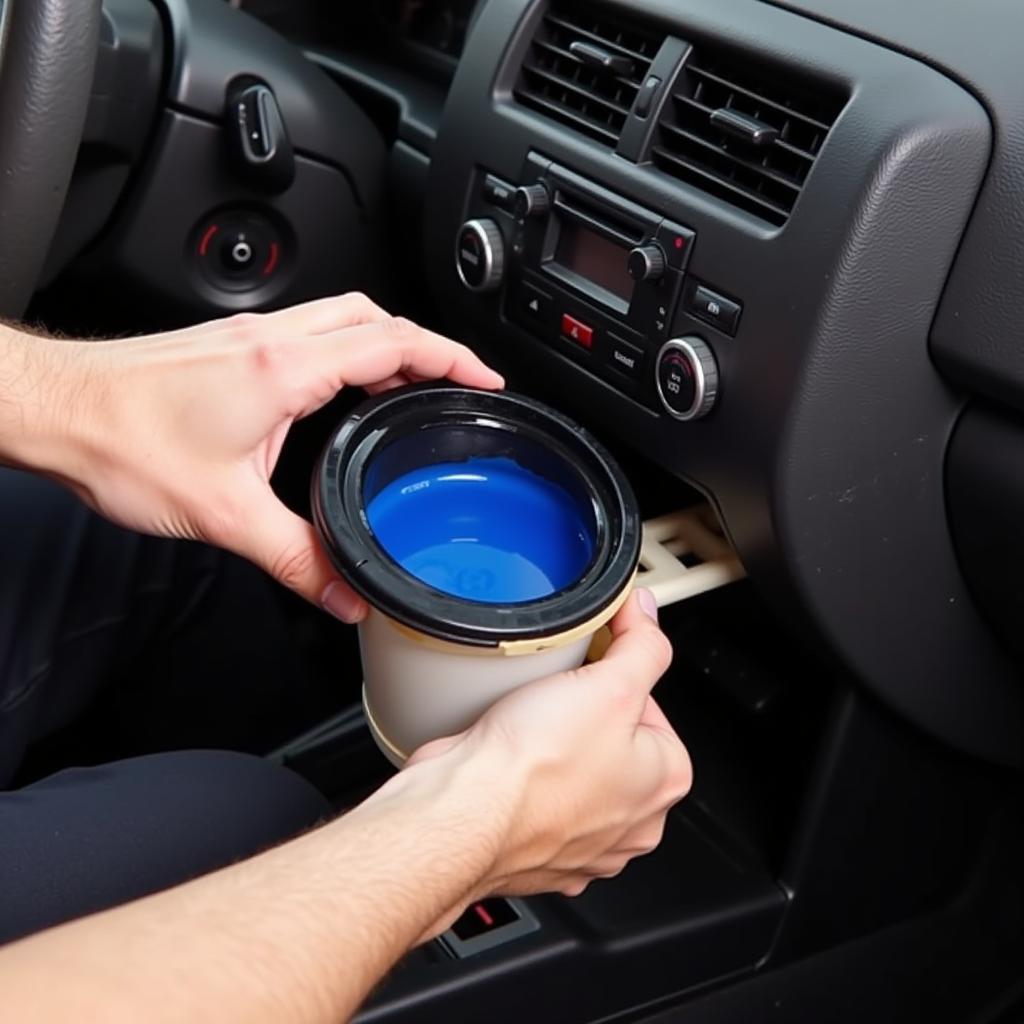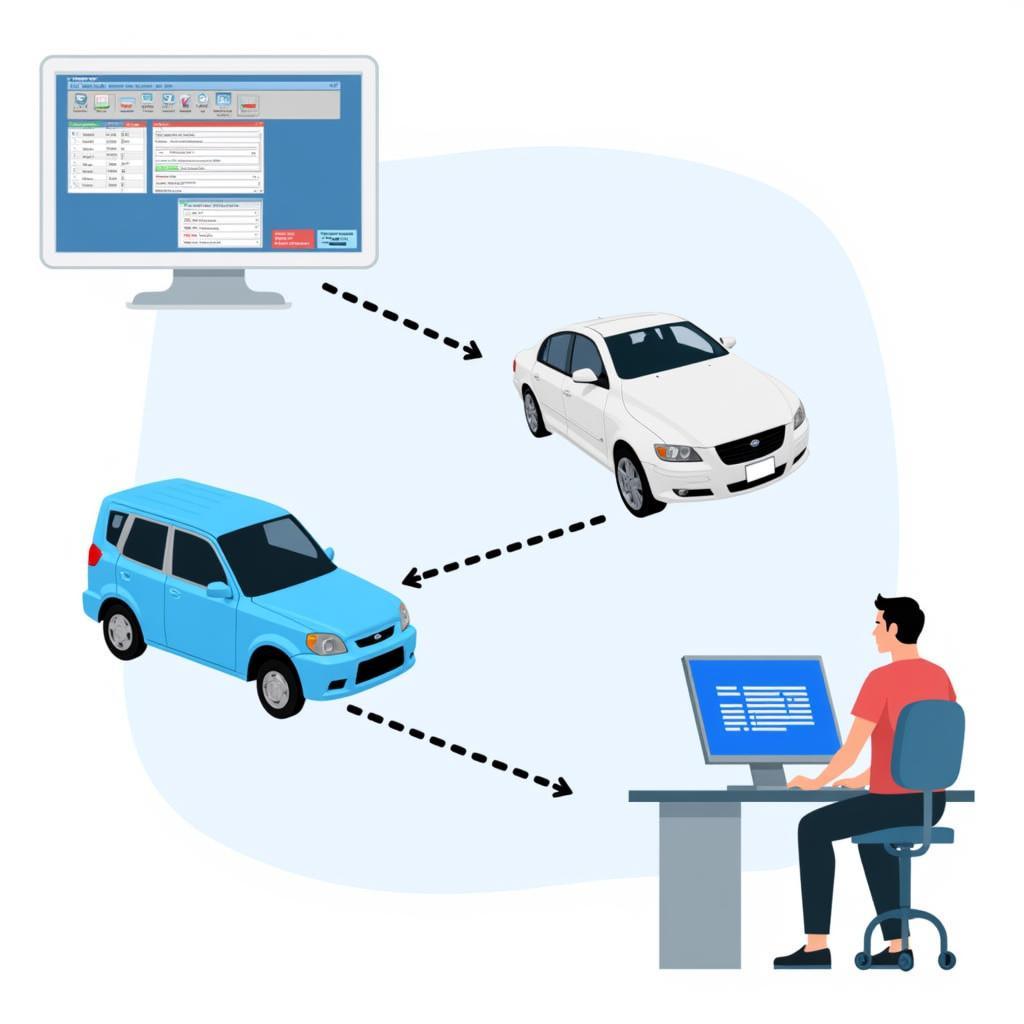The Ford brake system warning light is a critical safety feature that alerts you to potential problems with your vehicle’s braking system. Ignoring this warning light can increase the risk of accidents and costly repairs. This comprehensive guide will delve into the common causes of the Ford brake system warning light, offer troubleshooting tips, and provide solutions for a safe and smooth ride.
Understanding the Ford Brake System Warning Light
The brake system warning light, often represented by an exclamation mark within a circle or parentheses, can illuminate on your dashboard for several reasons:
- Engaged Parking Brake: The most common reason is an engaged parking brake. Always ensure your parking brake is fully released before driving.
- Low Brake Fluid Level: A leading cause of brake failure is low brake fluid. The warning light often signals a leak in the brake lines or a worn-out brake component.
- Faulty Brake Light Switch: A malfunctioning brake light switch can confuse the car’s computer, triggering the warning light even if your brakes are working fine.
- ABS Issue: In modern Ford vehicles, the brake system warning light can indicate problems with the Anti-lock Braking System (ABS). This might stem from faulty wheel speed sensors or issues within the ABS module.
 Ford Brake System Warning Light on Dashboard
Ford Brake System Warning Light on Dashboard
Troubleshooting the Warning Light
If your Ford brake system warning light illuminates, don’t panic. Follow these steps to diagnose the problem:
- Check Your Parking Brake: Ensure the parking brake is fully disengaged. If the light stays on, proceed to the next step.
- Inspect Brake Fluid Level: Carefully open the brake fluid reservoir (refer to your owner’s manual for its location) and check the fluid level. If it’s low, adding brake fluid might temporarily solve the issue, but it’s crucial to have a mechanic inspect for leaks.
- Inspect Brake Lights: Have a friend or family member press the brake pedal while you check if all brake lights are functioning correctly. If not, a faulty brake light switch might be the culprit.
 Checking Brake Fluid Level in a Ford Vehicle
Checking Brake Fluid Level in a Ford Vehicle
When to Seek Professional Help
While the steps above can help you identify common issues, it’s crucial to seek professional help if:
- The warning light remains on after adding brake fluid. This indicates a leak requiring immediate attention.
- You notice a soft or spongy brake pedal. This signifies air in the brake lines, compromising braking efficiency.
- You hear unusual grinding or squealing noises when braking. This suggests worn-out brake pads or other components requiring replacement.
Remote Diagnostics and Software Solutions
In today’s technologically advanced world, remote diagnostics and software solutions play a crucial role in car repairs. Certified technicians can remotely access your Ford’s onboard computer system to:
- Retrieve Diagnostic Trouble Codes (DTCs): These codes provide specific insights into the nature of the brake system issue.
- Perform Software Updates: Software updates from Ford might address known issues with the braking system and enhance its performance.
- Initiate Module Programming: In some cases, reprogramming or calibrating modules related to the brake system might be necessary to rectify the problem.
 Remote Diagnostics of a Ford Brake System
Remote Diagnostics of a Ford Brake System
Prevention is Key
Regular maintenance is vital to prevent brake system problems. Follow these tips to keep your Ford’s brakes in optimal condition:
- Regular Brake Inspections: Have your brakes inspected by a qualified mechanic at least once a year or as recommended in your owner’s manual.
- Timely Brake Fluid Flush: Brake fluid degrades over time, reducing its effectiveness. It’s essential to flush and replace your brake fluid as recommended by Ford.
- Quality Brake Pads: Invest in high-quality brake pads and ensure they’re replaced before they wear down completely.
Conclusion
The Ford brake system warning light is a crucial safety feature that should never be ignored. Understanding its implications and taking prompt action can save you from dangerous situations and costly repairs. By staying proactive with maintenance and utilizing modern diagnostic and software solutions, you can ensure a safe and enjoyable driving experience in your Ford.
Frequently Asked Questions
Q: Can I drive my Ford with the brake system warning light on?
A: It’s highly discouraged to drive with the brake system warning light illuminated. It indicates a potential issue that could compromise your safety.
Q: How much does it cost to fix a Ford brake system warning light issue?
A: The cost can vary greatly depending on the underlying problem. It could range from a simple brake fluid top-up to more complex repairs like replacing brake lines or modules.
Q: Can I check and add brake fluid myself?
A: Yes, you can check the brake fluid level and add more if needed. However, it’s crucial to use the correct type of brake fluid recommended for your Ford model.
Q: How often should I replace my Ford’s brake pads?
A: Brake pad lifespan depends on driving habits and conditions. It’s generally recommended to have them inspected every 12,000 miles and replaced as needed.
Q: What is the difference between the brake system warning light and the ABS light?
A: The brake system warning light indicates a general issue with the braking system, including low fluid or a faulty parking brake. The ABS light specifically points to a problem with the Anti-lock Braking System.
Remember, when it comes to brakes, safety should always be your top priority. Don’t hesitate to seek professional help if you encounter any issues or have concerns about your Ford’s braking system.
